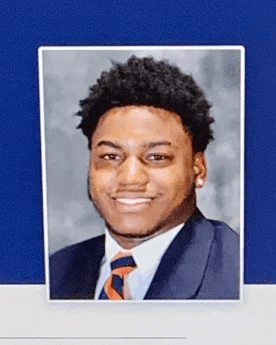‘The Weight of Being a Black Student Feels So Heavy Right Now’
Emily Davies, Washington Post, December 26, 2022
The day after the shooting that killed three students on the football team at the University of Virginia, dozens of campus leaders gathered to discuss how to help their community grieve.
Some started planning a vigil and suggested safe spaces for mental health support on campus. Others talked about laying flowers outside the football stadium or hanging commemorative banners.
The few Black students in the room, some participants said, were mostly quiet. They were too devastated for logistics.
At this school, all of campus mourned the loss of the three Black undergraduate student-athletes — Lavel Davis, D’Sean Perry and Devin Chandler. But the pain has been especially acute for many Black students, who have learned to lean on one another at a majority White school in a mostly White city with a racist history that has, in many ways, extended to the present.
Charlottesville became a hotbed for white supremacy in 2017 when throngs descended for the Unite the Right rally. About three months ago, campus security found a noose hanging around the Homer statue at the center of campus.
“The weight of being a Black student feels so heavy right now,” said Morgan Johnson, a 21-year-old on the executive board of a Black student-athlete group. She played spades with Davis and sat next to the shooting suspect in Swahili class.
In the university’s tightknit Black community, the connections are deep among young people who study and socialize together, often joining the same student groups and attending the same demonstrations. There was a group chat of Black undergraduates, where students would discuss events and other happenings on campus. Some took or considered taking classes with Theresa Davis, known affectionately as “Lady T,” the drama professor who organized the field trip where the shooting took place.
Many of these students lost three friends in the shooting. Some also knew the Black student, Christopher Darnell Jones Jr., who is charged in the killings.

Christopher Darnell Jones
Police have alleged that on Nov. 13, Jones methodically shot and killed Davis, Perry and Chandler on a bus as they arrived back to campus from a class trip to D.C. to see a play about Emmett Till. He also shot and wounded Michael Hollins Jr., another student and football player, and 19-year-old student Marlee Morgan.
Jones was arrested the next day — after students sheltered in place overnight — and is being held in custody on second-degree murder charges. {snip}
{snip}
At the University of Virginia, federal data shows 7 percent of roughly 17,000 undergraduates in fall 2021 were Black or African American, though that breakdown does not include students of color who are international or identify as multiracial. That marked a slight decline from the percentage of Black students enrolled at the college a decade ago, according to data published by the school.
The small percentage of Black students have become particularly close through years of racism on campus and in Charlottesville, according to some students, faculty and alumni. The university has publicly acknowledged that “slavery, in every way, was central” to its founding.
Over the past decade, the university has made concerted efforts to reckon with its history. The school has renamed buildings tied to slavery and racial segregation, launched a commission to study its racist past, created a task force to cultivate a more inclusive environment for Black students on campus, and committed over the next ten years to recruiting more diverse students and faculty.
Kevin Gaines, a professor of civil rights and social justice at U-Va., said the Black community at U-Va. is the “most cohesive” he has seen at a predominantly White university.
“It’s connected to the history and connected to an active effort among students and faculty … that has really contributed to the sense of solidarity, a deep sense of what it means to be Black at U-Va,” said Gaines, who taught Davis this semester in Introduction to African American and African Studies.
{snip}
The Wednesday before the shooting, Morgan Johnson said, she was sitting in the student center with Jones as they each listened to their virtual Swahili class. Jones turned to her and asked whether she was excited about graduating. She said she was, and then she asked Jones the same question.
“Yeah,” he told her, she recalled. “I’m ready to finally graduate.”
{snip}
The Black community came together weeks later at the Dec. 1 Lighting of the Lawn, an annual event on campus with food, dancing and a light show. Ian Solomon, dean of the Frank Batten School of Leadership and Public Policy, co-hosted an event with the Office of African-American Affairs, opening his home to Black students and faculty.
They ate pizza, sipped hot chocolate and apple cider, and talked about their plans for finals and winter break. In the corner, there were blank pieces of paper where attendees could write messages to the families of the deceased students.
Solomon, standing near a dessert table, said the shooting affected all of campus but “did impact many Black students more profoundly than others.”
{snip}















